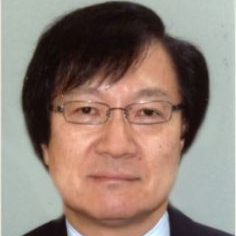Molecular Chaperones 2.0
A special issue of International Journal of Molecular Sciences (ISSN 1422-0067). This special issue belongs to the section "Molecular Biology".
Deadline for manuscript submissions: closed (31 December 2019) | Viewed by 152451
Special Issue Editor
Interests: hsp60; eurodegeneration microglia innate immunity
Special Issues, Collections and Topics in MDPI journals
Special Issue Information
Dear Colleagues,
Homeostasis is essential for maintaining cell function. For that purpose, proteins must fold to their native state in order to achieve functionality. Many heat shock proteins (HSPs) perform chaperone functions by stabilizing new proteins to ensure correct folding or by helping to refold proteins that were damaged by cell stress. Molecular chaperones belong to the family of conservative proteins with a high homology of the primary structure in both the prokaryote and eukaryote. HSPs are often classified according to their molecular weight and members include HSP90, HSP70, HSP60, and the small HSPs. Molecular chaperones have a large functional diversity. Their fundamental roles include de novo folding and the refolding of misfolded protein. Chaperones also regulate critical cellular processes, such as protein trafficking, protein degradation, protein complex assembly, and regulate functional proteins, such as steroid hormone receptors. The uniqueness of molecular chaperones results from their ability to interact with a very large number of different proteins, called clients. HSPs provide protection from cellular and environmental stress factors as molecular chaperones to maintain protein homeostasis. This Special Issue will include original research papers and outstanding reviews that show the role of molecular chaperones in the functionality of homeostasis in the cell.
Prof. Dr. Hideaki Itoh
Guest Editor
Manuscript Submission Information
Manuscripts should be submitted online at www.mdpi.com by registering and logging in to this website. Once you are registered, click here to go to the submission form. Manuscripts can be submitted until the deadline. All submissions that pass pre-check are peer-reviewed. Accepted papers will be published continuously in the journal (as soon as accepted) and will be listed together on the special issue website. Research articles, review articles as well as short communications are invited. For planned papers, a title and short abstract (about 100 words) can be sent to the Editorial Office for announcement on this website.
Submitted manuscripts should not have been published previously, nor be under consideration for publication elsewhere (except conference proceedings papers). All manuscripts are thoroughly refereed through a single-blind peer-review process. A guide for authors and other relevant information for submission of manuscripts is available on the Instructions for Authors page. International Journal of Molecular Sciences is an international peer-reviewed open access semimonthly journal published by MDPI.
Please visit the Instructions for Authors page before submitting a manuscript. There is an Article Processing Charge (APC) for publication in this open access journal. For details about the APC please see here. Submitted papers should be well formatted and use good English. Authors may use MDPI's English editing service prior to publication or during author revisions.
Keywords
- molecular chaperone
- Heat shock protein (HSPs)
- HSP90, HSP70, HSP60
- de novo folding
- misfolded protein
- protein trafficking
- protein degradation
- protein complex assembly
- homeostasis
Benefits of Publishing in a Special Issue
- Ease of navigation: Grouping papers by topic helps scholars navigate broad scope journals more efficiently.
- Greater discoverability: Special Issues support the reach and impact of scientific research. Articles in Special Issues are more discoverable and cited more frequently.
- Expansion of research network: Special Issues facilitate connections among authors, fostering scientific collaborations.
- External promotion: Articles in Special Issues are often promoted through the journal's social media, increasing their visibility.
- e-Book format: Special Issues with more than 10 articles can be published as dedicated e-books, ensuring wide and rapid dissemination.
Further information on MDPI's Special Issue polices can be found here.






